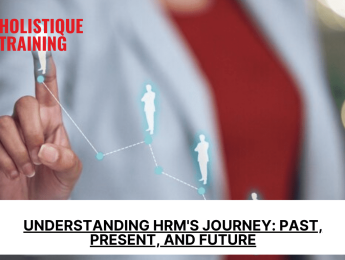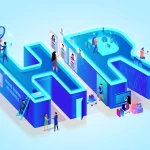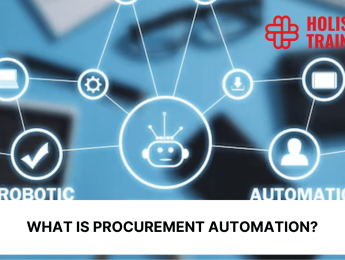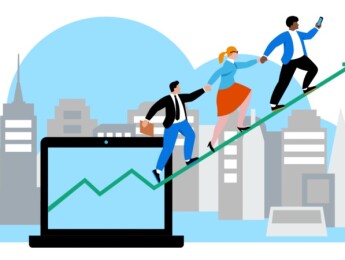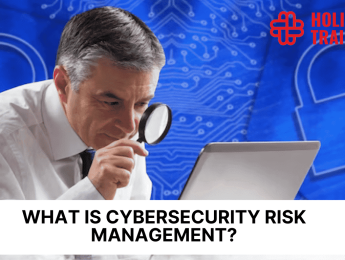- Table of Contents
- Introduction
- The History of HRM: Generations of HRM
- 1. Pre-Industrial Revolution HRM (Pre-18th Century)
- 2. The Industrial Revolution and Its Impact on HRM (18th-19th Century)
- 3. The Emergence of Personnel Management (Late 19th - Early 20th Century)
- 4. The Rise of Strategic Human Resource Management (SHRM) (Mid-20th Century)
- Different HRM Approaches in Different Years
- 1. Human Relations Approach (1920s - 1930s)
- 2. Systems Theory Approach (1950s - 1960s)
- 3. Contingency Approach (1960s - 1970s)
- 4. Total Quality Management (1980s - 1990s)
- 5. Scientific Management Approach (Late 19th - Early 20th Century)
- 6. Talent Management and Strategic HRM (2000s - Present)
- HRM in the Digital Age
- Technology Integration
- Data-Driven Decision Making
- Virtual Workforce Management
- Employee Self-Service
- Talent Management and Recruitment
- Employee Experience and Engagement
- Cybersecurity and Data Privacy
- What Is the Future of HRM Looking Like?
- 1. Artificial Intelligence (AI) and Automation
- 2. Diversity, Equity, and Inclusion (DEI)
- 3. Employee Well-being and Mental Health
- 4. Continuous Learning and Skill Development
- 5. Ethical AI and Data Governance
- 6. Human-AI Collaboration
- 7. Agile and Adaptive Leadership
- The Importance of Staying Up-to-date
- Competitive Advantage
- Legal and Ethical Compliance
- Employee Engagement and Retention
- Organisational Success
- Personal and Professional Growth
- Conclusion
Introduction
Human Resource Management (HRM) is a dynamic field that has seen profound transformations over the years. It has evolved through various generations, adapting to societal, economic, and technological changes. From its humble beginnings during the Industrial Revolution to the contemporary challenges posed by the digital age, HRM has continuously adapted to meet the evolving needs of organisations and their workforce. In this 3,000-word exploration, we delve into the fascinating journey of HRM, examining key milestones and envisioning its future.
The History of HRM: Generations of HRM
HRM can be divided into distinct generations, each reflecting the dominant management philosophy and organisational needs of its time. Understanding these generational shifts is crucial to appreciate how HRM has evolved.
1. Pre-Industrial Revolution HRM (Pre-18th Century)
In the epochs preceding the Industrial Revolution, HRM, as we recognise it today, was virtually nonexistent. Work environments were often agrarian and communal, where the concept of a formal HR department was inconceivable. People worked in small communities, where interpersonal relationships and informal agreements governed work dynamics. Management was localised, personal, and devoid of the bureaucratic structures we associate with modern organisations.
2. The Industrial Revolution and Its Impact on HRM (18th-19th Century)
The Industrial Revolution marked a turning point, catalysing the transformation of agrarian economies into industrial powerhouses. Factories emerged, and mass production became the norm. This shift necessitated a more systematic approach to managing the burgeoning workforce. HRM during this era was primarily focused on logistics - ensuring that workers were available when needed and managing the challenges posed by rapid urbanisation.
As factories bombed, so did the need for a structured workforce. Managers, often with rudimentary HR roles, began to oversee the complex task of coordinating workers, schedules, and tasks. The rise of factories brought forth the first inklings of workforce management as a distinct function within organisations.
3. The Emergence of Personnel Management (Late 19th - Early 20th Century)
With the Industrial Revolution in full swing, organisations grew in size and complexity. The need for a more formalised approach to managing employees became apparent. This led to the birth of Personnel Management, an era characterised by the creation of formal HR departments.
Personnel managers, as they were known then, were primarily responsible for administrative tasks such as hiring, payroll management, and record-keeping. While the focus was on ensuring compliance and order within the workforce, the concept of employee welfare also started gaining traction. However, the approach was paternalistic, focusing more on the organisation's needs than on the individual employee’s well-being.
4. The Rise of Strategic Human Resource Management (SHRM) (Mid-20th Century)
As the 20th century progressed, businesses became more intricate, global, and competitive. This complexity paved the way for the evolution of Strategic Human Resource Management (SHRM). Organisations began to realise that their workforce was not merely a resource to be managed but a strategic asset. HRM professionals started aligning their practices with broader organisational objectives, emphasising the importance of human capital in achieving business goals.
During this period, concepts such as talent acquisition, succession planning, and performance management gained prominence. HRM professionals transitioned from being administrators to strategic partners, actively contributing to organisational strategies and decision-making processes.
Each generation of HRM reflected the prevailing societal norms and organisational needs of its time. From the simplicity of pre-industrial communities to the complexities of today's global corporations, HRM has adapted and evolved, shaping the way we perceive work and the management of human capital. The journey of HRM through these generations serves as a testament to the adaptability and resilience of this vital organisational function, highlighting its continuous efforts to strike a balance between the needs of the organisation and the well-being of its workforce.
Different HRM Approaches in Different Years
The evolution of Human Resource Management (HRM) is not a linear progression but a rich tapestry of diverse approaches that have emerged in response to the ever-changing demands of the workplace. Over the years, HRM has undergone significant paradigm shifts, reflecting the prevailing ideologies and management philosophies of different eras.
1. Human Relations Approach (1920s - 1930s)
The Human Relations Movement, initiated by Elton Mayo and his colleagues at the Hawthorne studies, shifted the focus from task-oriented management to human-centric approaches. This era emphasised the psychological and social aspects of work. HRM professionals started recognising the significance of employee morale, motivation, and job satisfaction. Welfare programmes, employee engagement initiatives, and a greater emphasis on communication emerged as key features of this approach.
2. Systems Theory Approach (1950s - 1960s)
The Systems Theory Approach viewed organisations as complex systems with interconnected parts. HRM during this period embraced a holistic perspective, acknowledging the interdependence of various functions within an organisation. HR professionals began to recognise the ripple effects of their decisions across departments, leading to more integrated HR strategies. Emphasis was placed on aligning HR practices with overall organisational goals and ensuring synergy between different departments.
3. Contingency Approach (1960s - 1970s)
The Contingency Approach posited that there is no one-size-fits-all solution in management. Instead, HRM practices should be contingent upon the specific context of the organisation. HR professionals started tailoring their strategies based on factors such as company size, industry, culture, and external environment. This approach emphasises flexibility, adaptability, and the need for HRM practices to evolve in response to changing circumstances.
4. Total Quality Management (1980s - 1990s)
The Total Quality Management (TQM) approach, popularised by thinkers like W. Edwards Deming, emphasised continuous improvement, customer focus, and employee involvement. HRM practices during this period emphasised training and development to enhance employee skills, empower them to make decisions, and contribute to the organisation's quality initiatives. Employee participation in decision-making processes and a focus on customer satisfaction became central tenets of HRM.
5. Scientific Management Approach (Late 19th - Early 20th Century)
The scientific management approach, pioneered by Frederick Taylor, emphasised efficiency, standardisation, and productivity. HRM practices during this period were rooted in Taylorism, where tasks were analysed, and employees were trained to perform them with utmost precision. Time-and-motion studies were conducted to optimise workflow, and HRM's role was to ensure that these scientific principles were applied in the workplace.
6. Talent Management and Strategic HRM (2000s - Present)
In the contemporary landscape, HRM has embraced Talent Management and Strategic HRM. Talent Management emphasises attracting, developing, and retaining top talent within the organisation. Strategic HRM aligns HR practices with the overall strategic objectives of the organisation. This approach emphasises the pivotal role of HR in driving innovation, fostering a positive organisational culture, and ensuring long-term sustainability.
Each of these approaches represents a chapter in the evolving story of HRM. They reflect not only the changing dynamics of the workplace but also the evolving role of HR professionals as strategic partners in organisational success. Today's HRM practices stand on the shoulders of these historical approaches, integrating their valuable lessons into a comprehensive, multifaceted approach to managing human capital. As we move forward, the lessons from these diverse approaches continue to shape the future landscape of HRM, ensuring its adaptability and relevance in the face of future challenges.
Table 1: Evolution of HRM approaches
HRM Approach | Era | Key Characteristics |
Pre-Industrial | Pre-18th Century | Informal work arrangements, community-based. |
Scientific | Late 19th - Early 20th | Efficiency focus, task analysis, standardisation. |
Human Relations | 1920s - 1930s | Focus on employee morale, psychological aspects. |
Systems Theory | 1950s - 1960s | Holistic approach, interconnected organisational parts. |
Talent Management | 2000s - Present | Emphasis on attracting, developing, retaining talent. |
HRM in the Digital Age
As we entered the digital age, HRM underwent a revolution of its own. The advent of the internet, data analytics, and the proliferation of technology redefined the HR landscape. These are some of the key changes:
Technology Integration
Digitalisation has permeated every facet of HRM, leading to the integration of sophisticated software solutions and tools. Human Resource Information Systems (HRIS) have become the backbone of modern HR departments, enabling seamless management of employee data, payroll, benefits administration, and compliance. Additionally,Applicant Tracking Systems (ATS) have revolutionised recruitment processes, automating candidate sourcing, screening, and even initial communication.
Data-Driven Decision Making
One of the most profound impacts of the digital age on HRM is the rise of data-driven decision-making. HR professionals now have access to vast amounts of data, allowing them to analyse employee metrics, performance trends, and engagement levels. Predictive analytics and machine learning algorithms enable HRM to forecast trends, identify potential issues, and design proactive strategies to address challenges before they escalate.
Virtual Workforce Management
The digital age has ushered in an era of remote work and telecommuting. HRM practices have adapted to manage a geographically dispersed workforce effectively. Virtual collaboration tools, project management software, and online communication platforms have become essential for HR professionals to foster teamwork, communication, and productivity among remote teams. HRM now emphasises creating inclusive work cultures that support remote employees, ensuring they remain connected and engaged.
Employee Self-Service
Digitalisation has empowered employees through self-service portals. These platforms allow employees to manage their HR-related tasks independently, such as updating personal information, accessing pay stubs, requesting time off, and enrolling in benefits programmes. By enabling self-service, HRM professionals can focus on more strategic initiatives while employees enjoy the convenience of managing their HR-related activities autonomously.
Talent Management and Recruitment
The digital age has revolutionised talent acquisition and management. Social media platforms, professional networking sites, and online job boards have expanded the avenues for recruiting top talent. HRM professionals leverage these platforms for employer branding, engaging with potential candidates, and creating talent pipelines. Moreover, digital tools facilitate comprehensive talent management, including skills assessment, training programme customisation, and performance monitoring, ensuring a holistic approach to nurturing employee potential. According to a PwC HR Technology Survey, as mentioned in an article byOracle, 58% of companies leverage HR technology for talent acquisition and retention.
Employee Experience and Engagement
Digital tools play a pivotal role in enhancing employee experience and engagement. Employee feedback mechanisms, such as pulse surveys and real-time feedback apps, enable organisations to gather insights into employee sentiments. HRM professionals analyse this data to make informed decisions about workplace policies, benefits, and training programmes, creating a positive work environment that promotes employee satisfaction and loyalty.
Cybersecurity and Data Privacy
As HRM relies increasingly on digital platforms, ensuring cybersecurity and data privacy has become paramount. HR professionals collaborate with IT departments to implement robust cybersecurity measures, safeguarding employee data from breaches and cyber threats. Additionally, HRM plays a crucial role in compliance with data protection regulations, ensuring that employee data is handled ethically and legally.
In the digital age, HRM has become a dynamic and strategic function, leveraging technology to optimise processes, enhance employee experiences, and drive organisational success. By embracing digital innovations and staying abreast of technological advancements, HR professionals are well-equipped to navigate the complexities of the modern workplace, ensuring their organisations thrive in the rapidly evolving digital landscape.
What Is the Future of HRM Looking Like?
As we stand on the cusp of a new era, the future of Human Resource Management (HRM) appears both exciting and challenging. The relentless march of technology, evolving workforce dynamics, and societal shifts are reshaping the very fabric of HRM. Here's a glimpse into what the future holds for this vital organisational function:
1. Artificial Intelligence (AI) and Automation
The future of HRM is intricately woven with artificial intelligence and automation. AI-driven tools and chatbots will revolutionise employee interactions, handling routine queries, and administrative tasks efficiently. Machine learning algorithms will aid in talent acquisition, analysing vast datasets to identify the best candidates, while automation will streamline repetitive HR processes, allowing human resources professionals to focus on strategic, value-added activities.
2. Diversity, Equity, and Inclusion (DEI)
The future of HRM is undeniably diverse, equitable, and inclusive. Organisations are increasingly recognising the importance of fostering diverse workplaces. In fact, McKinsey's Diversity and Inclusion Report, as mentioned in an article byApplaud, highlights a 25% performance advantage for companies with higher gender diversity compared to less diverse counterparts. That’s why HRM will continue to lead the charge in implementing policies that promote diversity, ensure equal opportunities, and create inclusive environments where every employee feels valued and respected. Initiatives focusing on gender equality, cultural diversity, and accessibility will be at the forefront of HRM strategies.
3. Employee Well-being and Mental Health
The future of HRM prioritises employee well-being and mental health. Organisations will invest in comprehensive well-being programmes encompassing physical, mental, and emotional health. HRM professionals will champion initiatives that reduce workplace stress, promote work-life balance, and offer mental health support. Proactive mental health policies and stigmatisation of mental health issues will be central to HRM's approach, fostering environments where employees can thrive personally and professionally.
4. Continuous Learning and Skill Development
The future of work demands continuous learning and skill development. HRM will play a pivotal role in facilitating lifelong learning opportunities for employees. Personalised training programmes, upskilling, and reskilling initiatives will be tailored to individual career paths and organisational needs. HRM will harness e-learning platforms, virtual reality, and other innovative technologies to deliver engaging, on-demand learning experiences, ensuring employees remain adaptable in the face of rapid technological advancements.
5. Ethical AI and Data Governance
As AI becomes more prevalent in HRM, ethical considerations and data governance will be paramount. HR professionals will focus on implementing AI responsibly, ensuring fairness, transparency, and accountability in algorithmic decision-making processes. Strict data privacy measures and adherence to regulatory frameworks will be central to HRM's approach, safeguarding employee data and building trust within the workforce.
6. Human-AI Collaboration
The future of HRM envisions a harmonious coexistence between humans and artificial intelligence. HR professionals will collaborate with AI tools to enhance decision-making processes. While AI can analyse vast datasets and provide insights, human intuition, empathy, and contextual understanding will remain indispensable. HRM will strike a balance, leveraging the analytical power of AI while harnessing human creativity and emotional intelligence to make nuanced, people-oriented decisions.
7. Agile and Adaptive Leadership
In the future, HRM will focus on cultivating agile and adaptive leadership. Leaders will need to navigate through unprecedented challenges, requiring resilience, innovative thinking, and the ability to inspire and motivate diverse teams. HRM will champion leadership development programmes that emphasise emotional intelligence, cross-cultural competence, and the capacity to lead in ambiguous and rapidly changing environments.
In essence, the future of HRM is about embracing change, fostering inclusivity, prioritising employee well-being, and leveraging technology responsibly. HR professionals will be the architects of workplace cultures where innovation, collaboration, and continuous learning thrive, ensuring that organisations not only survive but thrive in the face of the evolving global landscape. As they continue to adapt and innovate, HRM will remain at the heart of organisational success, shaping workplaces that are not just productive and efficient but also humane and empowering.

The Importance of Staying Up-to-date
In the dynamic realm of Human Resource Management (HRM), staying up-to-date isn't merely a professional choice; it's a strategic imperative. The landscape of work is evolving at an unprecedented pace, driven by technological advancements, societal shifts, and economic transformations. In this constantly changing environment, HR professionals must not only keep pace but also proactively anticipate trends and adapt their strategies. Here’s why staying up-to-date is crucial in the world of HRM:
Competitive Advantage
In the competitive business landscape, organisations are in a perpetual race for talent. Staying current with the latest HR trends, tools, and techniques gives HR professionals a competitive advantage. They can attract top talent by offering modern, innovative HR practices that appeal to the best and brightest in the job market. An organisation with a progressive HRM approach stands out as an employer of choice, attracting skilled individuals who can drive the company’s success.
Legal and Ethical Compliance
The legal landscape surrounding HRM is constantly evolving. Labour laws, employment regulations, and compliance requirements change frequently. HR professionals must stay up-to-date to ensure their organisations adhere to these laws and regulations. Failing to comply with legal standards can result in significant financial penalties, reputational damage, and legal disputes. A thorough understanding of current laws and regulations enables HR professionals to protect their organisations and employees from legal complications.
Employee Engagement and Retention
The expectations of employees are changing. Modern employees seek workplaces that value their well-being, offer opportunities for growth, and provide a positive work experience. Staying up-to-date with HR practices allows organisations to create employee-centric environments. Engaged employees are more productive, innovative, and loyal. HR professionals equipped with the latest strategies in employee engagement and retention can foster a positive workplace culture that keeps employees motivated and committed to their roles.
Organisational Success
HRM is the backbone of organisational success. It touches every aspect of an organisation, from recruitment and training to performance management and organisational culture. Staying current with HRM best practices ensures that HR professionals can align HR strategies with organisational goals. This alignment is essential for achieving business objectives, improving productivity, and driving innovation. HR professionals who are up-to-date can design HR initiatives that directly contribute to the overall success of the organisation.
Personal and Professional Growth
For HR professionals, staying up-to-date is not just a responsibility but also an opportunity for personal and professional growth. Continuous learning and skill development are essential in a field that is constantly evolving. HR professionals who invest in staying current enhance their expertise, making them more valuable assets to their organisations. Additionally, continuous learning keeps HR professionals inspired, motivated, and intellectually engaged in their work, leading to long and fulfilling careers in HRM.
In short, staying up-to-date in HRM is not merely a choice; it’s a commitment to excellence and organisational success. By embracing the latest trends, technologies, and strategies, HR professionals position themselves and their organisations for a future of growth, innovation, and prosperity. In a world where change is the only constant, the ability to adapt and stay ahead of the curve is what distinguishes exceptional HR professionals and truly thriving organisations.
Conclusion
The evolution of HRM is a captivating journey through history, shaped by economic shifts, technological advancements, and societal changes. As we look to the future, HRM is poised to embrace AI, diversity, employee well-being, and more. The importance of staying current in this field cannot be overstated. HR professionals must continuously adapt to lead their organisations toward a brighter and more dynamic future.
If you're eager to not only stay current but lead the digital revolution in HR, our course ‘Digital Change in Your HR Department’ is your gateway to mastering the latest technologies and strategies. Enrol now and empower your HR department for a future of innovation and success!


